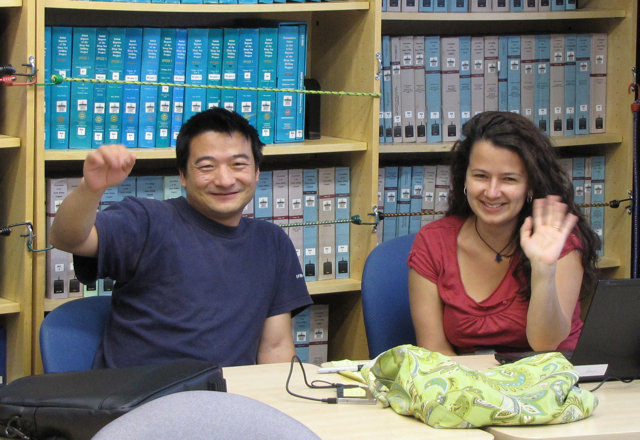
Farewell to Expedition 334
CRISP is ending in the flurry that was predicted from the beginning. Coring until the last possible minute. Hole B at U1381 was punched at 4 or so this morning as the labs are being cleaned and the hard rock describers are finishing the last cores. In Hole A, there was no recovery of the top 30 m of sediment and we didn’t have temperature measurements. The geochemists needed this data to get the whole picture of the material that is entering the subduction zone. The temperature is critical in for models of heat flow.
The technique to recover these final cores was old school. With the rotary core barrel (RCB) at the end of the pipe, we pushed into the sediment. No turning of the drill bit. Just like pushing a drinking straw through a cake. In the other holes when the goal was good sediment recovery, extended core barrel (XCB) was used. Using RCB as a gravity corer hasn’t been done since the 1980s. New drilling systems such as XCB were designed for good sediment core recovery.
Tomorrow I’ll say farewell to my friends and colleagues. We will head back to our homes across the four corners of the world – me to California, Gary to Australia, Stephan and Udo to Germany, and our seven Japanese colleagues to a country that was devastated as when the expedition began. It has been an adventure of all kinds. I’ll miss learning every day and my morning stretching with the new morning light. I can’t wait for the silence and softness of land. I’ll be at the farmer’s market Sunday morning so I can cook my own meals. The JR has a mighty hum that I won’t miss. I look forward to continue learning from my colleagues about the subudction zone of Costa Rica.
I just checked the comments on this blog and, as usual, no real comments. I know you have all been here, following along silently. This morning, I did get one comment about a sale on Canadian goose parkas and decided that on the tropical waters of Costa Rica no one would want one. Farewell to my readers. I’m so happy that many of you stuck with me through the cruise. It was great to know that my family, friends, co-workers, students, and teachers were able to experience this with me. Also, I loved hearing that many families of the science team also followed along.
Stay tuned for the next expedition which begins in just a few days. Expedition 335: Superfast Spreading Rate Crust 4.

A piece of Cocos Ridge to show to students and teachers for the teaching collection.
A little pyrite (fool’s gold) on the basalt.